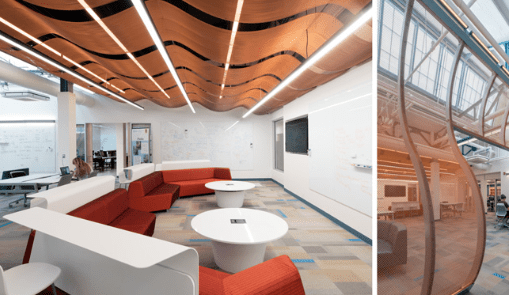As technology continues to evolve, it is increasingly playing a vital role in the field of interior architecture. From smart homes to virtual reality, the intersection of technology and interior architecture is producing exciting innovations in design. In this article, we will explore some of the ways in which technology is impacting interior architecture and how these innovations are changing the way we design and experience spaces.
Smart Home Technology
Smart home technology is revolutionizing the way we interact with our living spaces. From lighting and climate control to security and entertainment, smart home systems are giving us greater control over our homes than ever before. Interior architects are incorporating smart home technology into their designs, creating spaces that seamlessly integrate technology into the built environment.
For example, lighting systems can be programmed to adjust automatically based on time of day, or to change colors to match the mood of the space. Smart thermostats can learn your preferences and adjust temperature settings accordingly, while smart locks can be controlled remotely, giving you greater security and peace of mind. With the integration of smart home technology, interior architecture is becoming more dynamic, adaptable, and responsive to the needs of its occupants.
Virtual and Augmented Reality
Virtual and augmented reality technologies are also having a significant impact on interior architecture. With virtual reality, designers can create immersive 3D environments that allow clients to experience a space before it is even built. This technology enables clients to “walk through” a space and get a feel for the layout, colors, and textures, helping them to make more informed decisions about the design.
Augmented reality technology is also being used in interior architecture to enhance the design process. With augmented reality, designers can overlay digital information onto physical spaces, allowing them to experiment with different design options and see how they would look in the real world. This technology is helping interior architects to make more informed decisions, and to create more accurate and effective designs.
Robotics and Automation
Robotics and automation technologies are also playing an increasingly important role in interior architecture. From automated lighting systems to robotic furniture, these technologies are making our living spaces more efficient, comfortable, and convenient. For example, robotic furniture can be programmed to change configurations based on the needs of the space, or to adapt to the needs of the occupants.
In addition, automation technologies are helping to create more sustainable and energy-efficient spaces. For example, automated lighting systems can adjust to natural light levels, reducing the need for artificial lighting and saving energy. Similarly, automated climate control systems can adjust temperature settings based on occupancy patterns, reducing energy waste and improving comfort.
The Future of Technology and Interior Architecture
As technology continues to evolve, the possibilities for its integration into interior architecture are endless. With the advent of 5G networks and the Internet of Things, we can expect to see even greater integration of smart home technology into the built environment. Virtual and augmented reality technologies will continue to improve, allowing us to create more immersive and accurate 3D environments.
Robotics and automation technologies will also continue to play an important role in interior architecture, making our living spaces more efficient, comfortable, and sustainable. In addition, we can expect to see new technologies emerge that we can’t even imagine yet, pushing the boundaries of what is possible in interior architecture.
In conclusion, technology is having a profound impact on interior architecture, driving innovation and transforming the way we design and experience spaces. From smart home technology to virtual and augmented reality, robotics and automation, the possibilities for technology in interior architecture are endless. As interior architects, it is our job to stay informed about these emerging technologies and to use them to create spaces that are both beautiful and functional. By embracing technology, we can create spaces that are responsive to the needs of their occupants, more sustainable and energy-efficient, and more immersive and engaging than ever before.



































